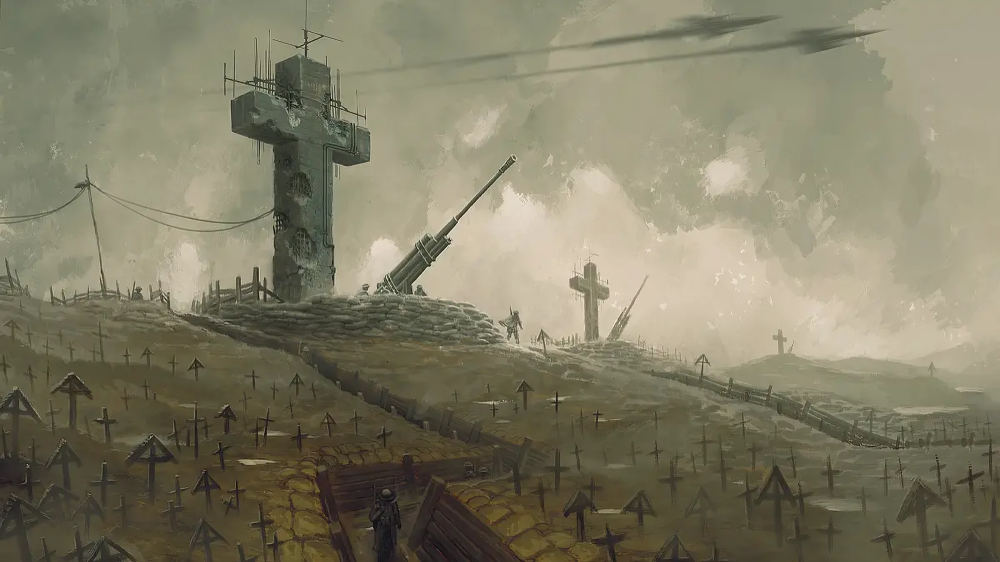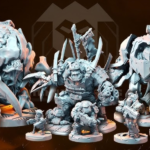The term “Trench Crusade” evokes powerful imagery of prolonged battles, strategic warfare, and the grueling conditions that soldiers endured. Throughout history, trench warfare has played a crucial role in conflicts, particularly in World War I. This article explores the significance of the trench crusade, its impact on warfare strategies, and the lessons learned from these brutal confrontations.
What is a Trench Crusade?
A trench crusade refers to prolonged and intense battles fought from entrenched positions. These warfare tactics were characterized by deep trenches, barbed wire defenses, and prolonged stand-offs between opposing forces. The concept became widely recognized during World War I, where soldiers from both sides dug elaborate trench systems to gain strategic advantages while minimizing casualties.
Origins of Trench Warfare
Trench warfare dates back centuries, but it became a defining feature of World War I. The need for defensive positions led armies to construct vast networks of trenches, stretching for miles across battlefields. These trenches provided cover from enemy fire but also created harsh living conditions for soldiers.
Key Characteristics of a Trench Crusade
- Elaborate Trench Systems – Trench networks included front-line trenches, support trenches, and communication trenches to facilitate movement and supply distribution.
- No Man’s Land – The area between opposing trenches, often filled with barbed wire, landmines, and the remnants of previous battles.
- Prolonged Stalemates – Many trench battles lasted for months or even years, as both sides struggled to gain an advantage.
- Technological Adaptations – Machine guns, poison gas, artillery barrages, and tanks were introduced to break the deadlock.
The Most Notable Trench Crusades in History
1. The Western Front – World War I
The Western Front was a prime example of trench warfare, where German, French, and British forces engaged in brutal battles such as the Battle of the Somme and the Battle of Verdun. The extensive trench networks led to a war of attrition, with soldiers enduring extreme hardships.
2. The Eastern Front – World War II
While World War II saw more mobile warfare, trenches still played a role, particularly in the Siege of Leningrad and the Battle of Stalingrad. Defensive trench systems helped resist enemy advances and played a critical role in strategic defenses.
3. The Korean War and Beyond
Even in modern conflicts, trench warfare tactics have been utilized in localized battles. In the Korean War, trenches were used along the 38th parallel, where soldiers fought in entrenched positions similar to those seen in previous wars.
The Life of Soldiers in a Trench Crusade
Life in the trenches was anything but easy. Soldiers faced constant threats from enemy attacks, harsh weather conditions, and limited supplies. Here’s what daily life in the trenches looked like:
1. Living Conditions
- Soldiers lived in muddy, rat-infested trenches with little shelter from the elements.
- Lack of proper sanitation led to diseases such as trench foot, dysentery, and typhoid fever.
2. Psychological and Physical Toll
- The fear of sudden attacks, artillery bombardments, and sniper fire led to severe stress and trauma.
- Soldiers suffered from shell shock, a condition now recognized as PTSD.
3. Warfare Tactics and Strategies
- Barbed Wire and Traps – Prevented enemy advancements.
- Tunneling and Sabotage – Some armies dug tunnels beneath enemy lines to plant explosives.
- Gas Attacks – The use of poison gas, such as mustard gas, introduced new horrors to warfare.
The End of the Trench Crusade: Evolution of Warfare
Trench warfare eventually declined due to advancements in military technology and strategy. The introduction of tanks, airpower, and mechanized infantry allowed for more fluid and dynamic battles, making static trench warfare less effective.
Modern-Day Implications
While traditional trench warfare has faded, elements of it can still be seen in modern conflicts. Urban warfare, defensive fortifications, and prolonged sieges share similarities with historical trench battles. Military strategists continue to study past trench crusades to understand the effectiveness and limitations of entrenched warfare.
FAQs
Q: Why was trench warfare so common in World War I?
A: Trench warfare was used because of the deadlock caused by modern weaponry, making open-field battles too deadly.
Q: How did soldiers survive in the trenches?
A: Soldiers relied on rations, makeshift shelters, and camaraderie to endure the harsh conditions of trench warfare.
Q: What led to the decline of trench warfare?
A: The development of tanks, aircraft, and mobile warfare tactics made trench warfare obsolete.
Q: Were trenches used in World War II?
A: Yes, but trench warfare was less prominent due to the more mobile nature of the war. However, defensive trenches were still used in key battles.
Q: What lessons were learned from trench warfare?
A: Trench warfare highlighted the need for more dynamic combat strategies and led to the development of modern military tactics.
Conclusion
The trench crusade remains one of the most defining aspects of historical warfare. It demonstrated both the resilience of soldiers and the brutality of prolonged conflict. While technology has evolved, the lessons from trench warfare continue to shape military strategies today. The stories of those who fought in the trenches serve as a testament to human endurance and the ever-changing nature of warfare.


